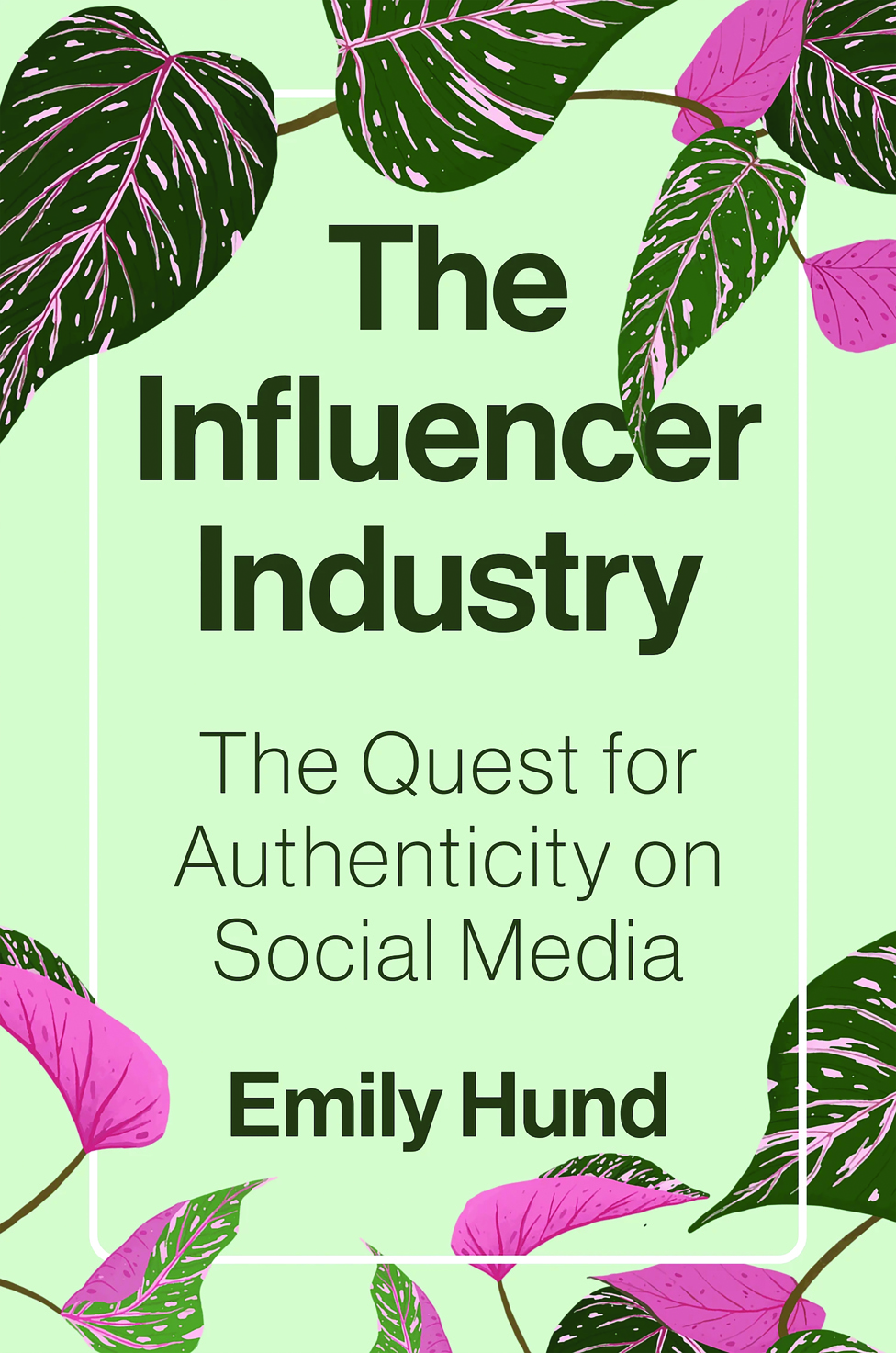Emily Hund’s The Influencer Industry: The Quest for Authenticity on Social Media examines the shifting meaning of “authenticity” within an industry built around self-branding and commercialism. The book serves as a critical history of the influencer industry, tracking its development over the last decade. The author conducted dozens of interviews with professional influencers and those still aspiring to become influencers, marketers and technologists, brands and sponsors, talent managers, and trend forecasters. Throughout the book, Hund explains how these individuals negotiate the meaning, value, and practicality of digital influence as a commodity and how the shifting language of “realness” is really a means for those in power to exploit precarious digital workers.
The first chapter lays the historical groundwork for the influencer industry as we know it today. It is an essential read for those new to influencer research and those in positions that interact with digital creators. Hund details the history of influence research from ancient Greece, through the 1900s, to the birth of the contemporary influencer industry. Through an engaging explanation of the technical, cultural, economic, and industrial factors that helped the work of influencers become mainstream, Hund provides the reader with an understanding of how the influencer industry was ripe for growth at this specific time in our recent history.
Chapter two explores the years in which the influencer industry established itself through four primary understandings: brands as people, people as brands, followers as economic assets, influence as measurable and monetizable, and authenticity as a perception. Intermediaries like marketers, talent agencies, and other digital media professionals positioned themselves as the ones responsible for professionalizing this burgeoning industry. Hund skillfully constructs a detailed narrative of the operationalization behind the logic of the influencer industry as a commercialized entity.
To explain in greater detail how marketers and brands worked together to streamline the industry and make it more economically efficient, chapter three expands on the previous chapter to include influencer marketing agencies and the evolution of data-driven technologies to determine the viability of specific influencers. Hund argues that certain metrics acted as gatekeepers to various aspects of the industry, like participating in lucrative brand deals. Influencers were then tasked with figuring out how to balance authenticity and their desire to potentially “sell out” in exchange for sponsored content. During this time, the industry also experienced an increase in self-commercialization of influencer content, as influencers began to use companies like RewardStyle and its subsequent product, LikeToKnowIt, whose tools allowed influencers to earn money off their content without support from talent agencies and brands. These products provided influencers with tools to make blog posts and social media content shoppable before the platforms themselves allowed for this type of commercialization.
The fourth chapter examines the adaptability of the influencer industry, as the public began to question the motives of those involved starting as early as 2010. The author first introduces several public controversies surrounding influencers before suggesting the ways in which marketers, brands, tech companies, and even influencers themselves attempted to reposition and regain control of their image. At this time, social media users became more skeptical of the influencer industry and the social media platforms they inhabited, and Hund contributes to the scholarly understanding of how the influencer industry was able to reposition itself and model its structure after media industries’ broader push toward the integration of purchasable products through lifestyle content.
The penultimate chapter outlines the recent desire of some influencers to walk away from the influencer industry. Starting in 2020, Hund contextualizes the increased demands for visibility and lack of privacy provided to influencers, along with the demand for influencer equality. In light of several ongoing conversations around anti-racism, police brutality, the COVID-19 pandemic, and the United States presidential election, many influencers felt the need to take social media breaks or leave certain platforms entirely. Many of those who stayed attempted to shift the industry toward purpose-driven causes. This resulted in an increase in socially conscious influencers and the growth of novel social media platforms as spaces for “real” people during the pandemic, yet the industry’s precarity continued to disproportionately impact marginalized creators as the call to professionalize the industry for the benefit of all influencers grew louder.
The final chapter argues four main points: social media companies must be regulated, influencers need to prioritize professional organizing efforts, brands and marketers need to value creativity over efficiency, and users deserve transparency. Hund makes a case for not just influencers but all social media users to advocate for themselves in digital spaces while still recognizing that this book has primarily detailed the structural issues within the influencer industry. The author posits that authenticity is a construction of the influencer industry, but that doesn’t mean individuals cannot take steps to protect themselves. Hund is careful to note her desire to amplify the voices of individuals involved in the industry while also calling for regulatory attention to media and technology companies who require strict regulation.
The Influencer Industry dives into the rise of social media influencers, the precariousness of social media work, and how various groups are working to sustain this industry. Hund offers insight into the development of the influencer industry and its roots in technological, economic, cultural, social, and scholarly events. This book is written for academics, media professionals, and government and technology industry leaders who must understand influencer culture on a deeper level as it continues to grow and adapt. This book should be read by anyone who desires a greater knowledge of the influencer industry, as well as any course on media industries and internet culture.
Mariah L Wellman (PhD, University of Utah) is an assistant professor in the Department of Communication at the University of Illinois at Chicago. Her research interests include technology, influencer culture, and the wellness industry.


